The be quiet! Straight Power 12 750W PSU Review: Proficient Platinum Power
by E. Fylladitakis on April 5, 2024 8:00 AM EST- Posted in
- Cases/Cooling/PSUs
- PSUs
- 750W
- be quiet!
- 80Plus Platinum
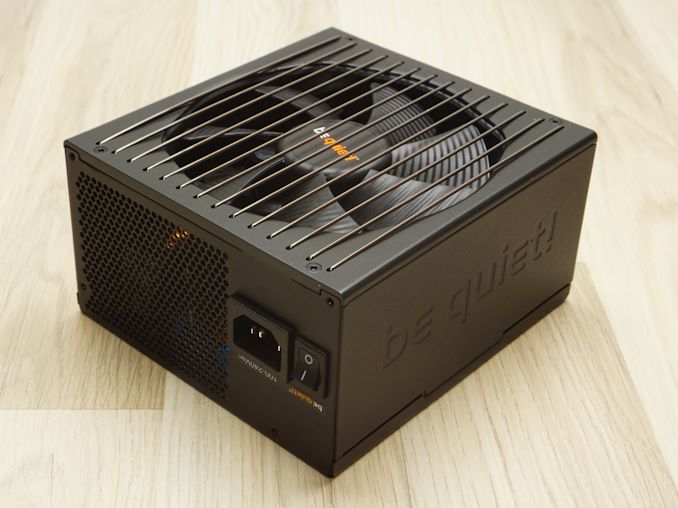
In the arena of PC components, Be quiet! is a name synonymous with excellence, known for its fusion of silent functionality and exceptional performance. The company's broad range of products, from high-end power supply units (PSUs) to sophisticated cases and cooling solutions, including both air and liquid options, is crafted with a keen eye on reducing noise while maximizing efficiency. Be quiet! has earned accolades for its dedication to achieving near-silent operation across its lineup, making it a preferred choice among those in the PC enthusiast community who seek a serene computing environment. The diversity of its offerings reflects a deep understanding of the needs of tech enthusiasts and professionals alike, with each product designed to offer a blend of low noise levels and high efficiency.
Today we're looking at he Be quiet! Straight Power 12 750W PSU, a high-tier offering in Be quiet!'s PSU portfolio that exemplifies the brand's approach to product design. The Straight Power 12 series is engineered to deliver top performance and whisper-quiet operation, appealing to users who seek the optimal mix of power efficiency and sound level, without compromising on reliability and premium quality. The 750 Watt model that we are reviewing today is the weakest unit of the series, yet still enough to effortlessly power a modern gaming system with a mid-tier GPU.
| Be Quiet! Straight Power 12 750W Power specifications ( Rated @ 50 °C ) |
|||||
| RAIL | +3.3V | +5V | +12V | +5Vsb | -12V |
| MAX OUTPUT | 25A | 25A | 62.5A | 3A | 0.3A |
| 130W | 750W | 15W | 3.6W | ||
| TOTAL | 750W | ||||
| 80PLUS RATING | Platinum | ||||
| AC INPUT | 100 - 240 VAC, 50 - 60 Hz | ||||
| MSRP | $140 | ||||
Packaging and Bundle
The Straight Power 12 750W PSU shows up in a sleek package that sticks to the classy all-black design be quiet! has us used to, with the PSU's snapshot taking center stage on the front. Inside the box, a nylon bag and foam inserts make sure the unit gets to you without a scratch. Information about the unit and its performance are printed on the sides and back of the box.
In keeping with Be quiet!'s focus on providing just what's necessary, the Straight Power 12 750W packaging contains all you need to get it up and running. Inside, you'll find a basic set of mounting screws, an AC power cable, and just a bit more to sweeten the deal - a detailed manual and some cable ties, as well as two cable straps that hold the two modular cable bundles together.
What sets the Straight Power 12 apart is the design of the modular cables themselves. It is a fully modular design that allows for the removal of every DC power cable, even the 24-pin ATX connector, which is common nowadays. However, the all-black cables are all nylon-sleeved for a uniform look, much unlike most of the competition that is trying to be rid of nylon sleeving and use ribbon-like cables instead.
| Be quiet! Straight Power 12 750W | ||
| Connector type | Hardwired | Modular |
| ATX 24 Pin | - | 1 |
| EPS 4+4 Pin | - | 1 |
| EPS 8 Pin | - | 1 |
| PCI-E 5.0 | - | 1 |
| PCI-E 8 Pin | - | 4 |
| SATA | - | 9 |
| Molex | - | 2 |
| Floppy | - | - |
The Be Quiet! Straight Power 12 750W PSU
External Appearance
The Be quiet! Straight Power 12 750W PSU is housed in a chassis that measures 86 mm × 150 mm × 160 mm (H × W × D), making it just a tad longer than the formal ATX PSU dimensions. It can fit into a wide variety of contemporary PC cases without a hitch, particularly those designed with high-performance parts in mind. The size is precisely chosen to accommodate its 135 mm cooling fan, ensuring efficient thermal management.
Be quiet! has dedicated attention to the exterior aesthetics of the Straight Power 12 750W, a detail that stands out for a product designed to deliver both quality and performance. The unit boasts a satin black finish, offering a refined look, with the company's logo elegantly embossed on the right side of the chassis. The design of the fan finger guard is distinctive, featuring a unique parallel wire construction that enhances the PSU's overall appearance. On the left side, there is a sticker displaying the electrical specifications and certifications, maintaining a balance between functionality and design sophistication, with the top side kept sleek and simple.
At the back, you'll find the usual on/off switch right beside the AC input, with the unit's front dominated by modular cable connectors, each labeled with a clear white legend for straightforward identification. Significantly, the Straight Power 12 750W features an ATX 3.0 PCI 5.0 600W (12VHPWR) connector, highlighting its compliance with the latest ATX 3.0 standards. This makes it a standout choice, especially given its power output, ready to support the newest, power-hungry GPUs, yet the system’s builder needs to be considerate regarding the balance of the system’s components – even though the Straight Power 12 750W PSU can theoretically power the most power-hungry GPU currently available, it cannot handle both that and a power-hungry CPU.
Internal Design
The Be quiet! Straight Power 12 750W PSU incorporates a cooling fan from their own prestigious lineup, the SilentWings 3 135mm, featuring an all-black design and a fluid dynamic bearing (FDB) engine for enhanced durability and efficiency. Opting for a slightly larger fan than the norm for PSUs, this model supports the unit's design ethos of superior cooling without compromising on noise. Despite its size, the fan is capable of reaching up to 1800 RPM, a high speed for a 135 mm fan and disproportionately powerful for a 750W unit.
The Straight Power 12 750W PSU is crafted by FSP, an Original Equipment Manufacturer (OEM) renowned for its significant presence in the power supply sector, catering to both mid- and top-tier markets. FSP holds a distinguished place among the elite PSU manufacturers, owing to its long history and substantial expertise in developing PC power supplies. Their reputation for producing high-quality and reliable units is well-established within the industry, marking them as a trusted name for both consumers and professionals seeking dependable power solutions.
The Straight Power 12 750W PSU incorporates fairly advanced but proven topologies, mixing performance with reliability. The unit is equipped with a slightly enhanced filtering stage featuring four Y capacitors, two X capacitors, and two substantial filtering inductors, leading up to a pair of standard rectifying bridges that can be found on their dedicated small heatsink. Its Active Power Factor Correction (APFC) circuitry is mounted on a large heatsink situated along the edge of the PCB. This section boasts two APFC MOSFETs (R6030KNX) and a diode, complemented by a filtering inductor wrapped in a plastic sleeve and two high-quality Rubycon capacitors (330 μF each).
For its inversion primary stage, the Straight Power 12 750W PSU utilizes a full-bridge LLC topology, a proven choice for high-performance power supplies. The four bridge MOSFETs are situated on the same long heatsink that also houses the APFC components. The secondary stage sees a slight departure from the norm with four MOSFETs at the rear of the PCB handling the synchronous rectification for the main 12V line. A typical vertical daughterboard houses the DC-to-DC conversion circuits for generating the 3.3V and 5V lines.
For the secondary side's capacitors, a blend of premium Rubycon and Nippon Chemi-Con components is used, signifying a commitment to top-tier quality and reliability. The choice of capacitors makes the Straight Power 12 an all-Japanese affair, as expected from a product of its class.


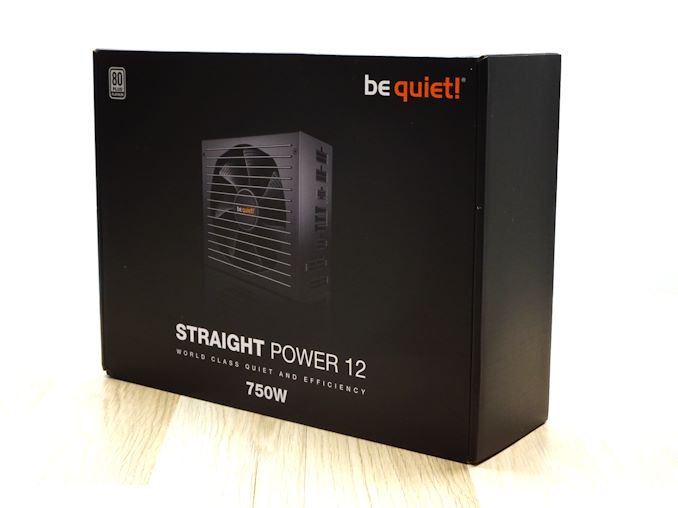
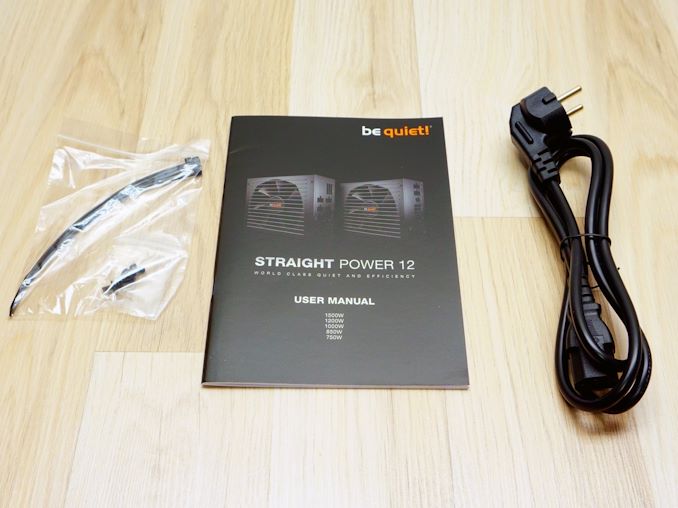
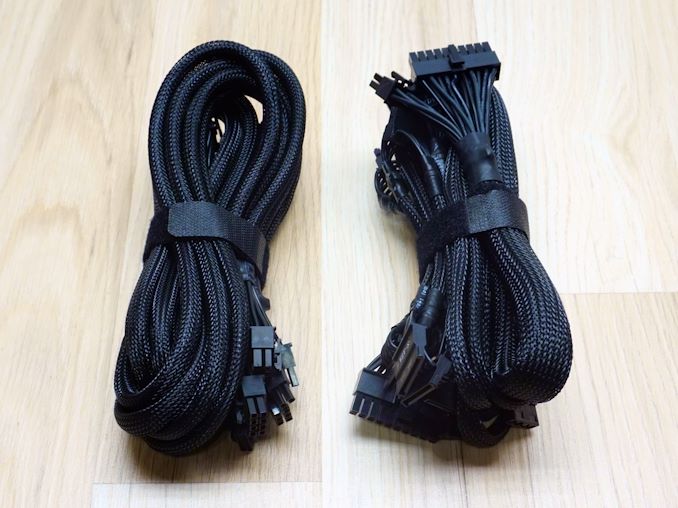

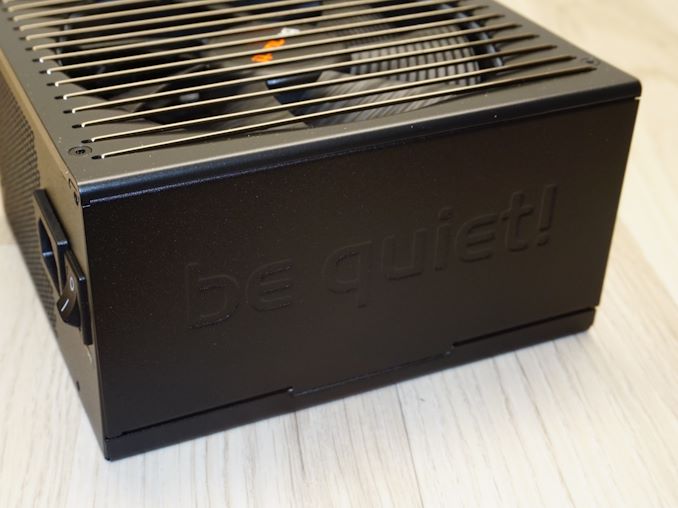
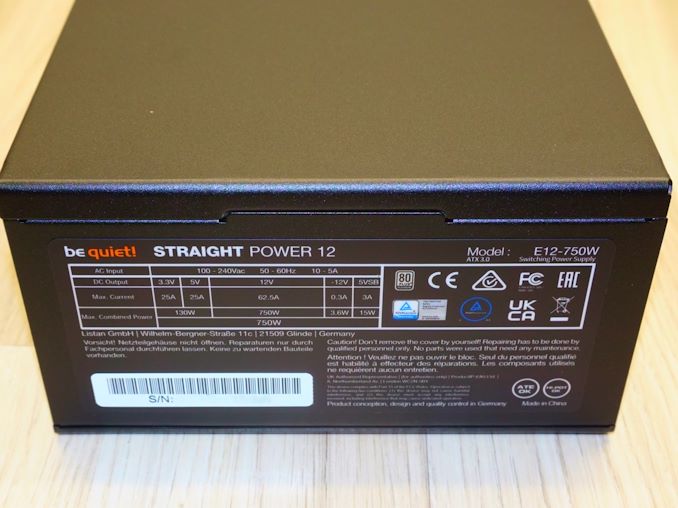
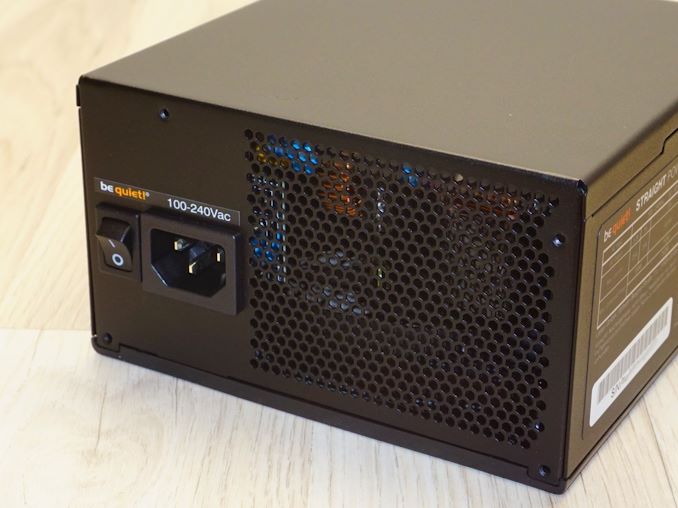
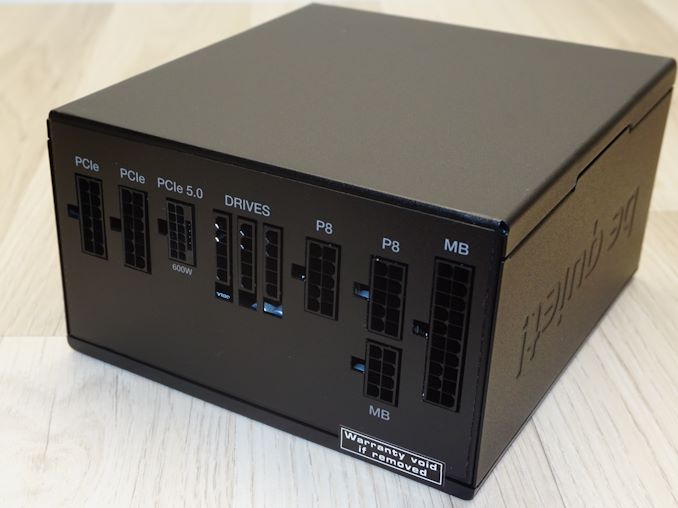

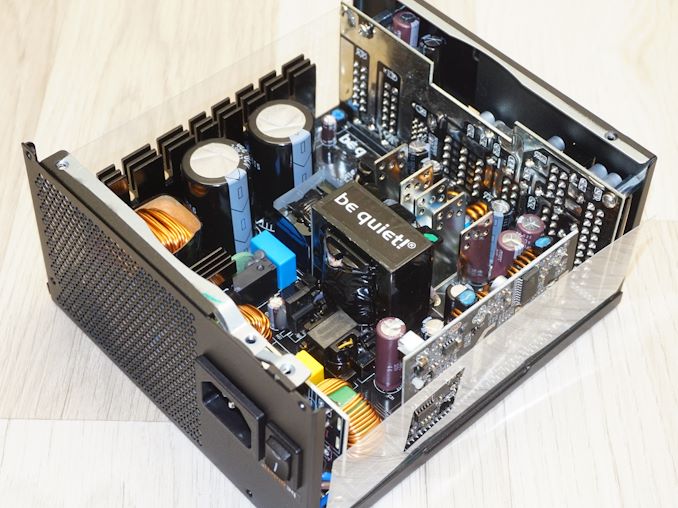
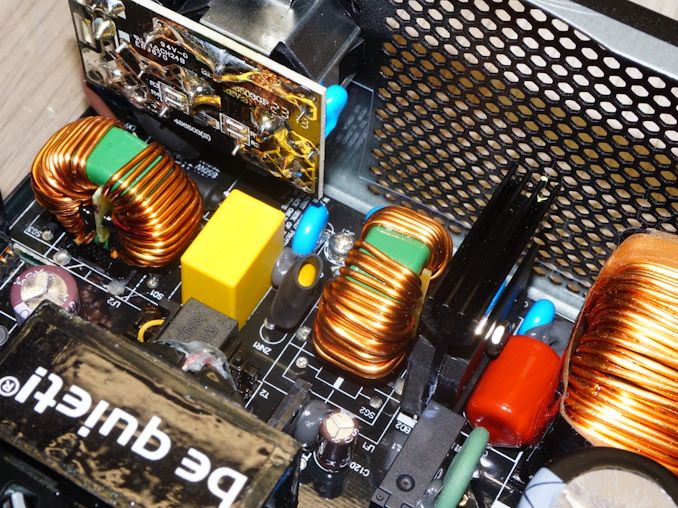
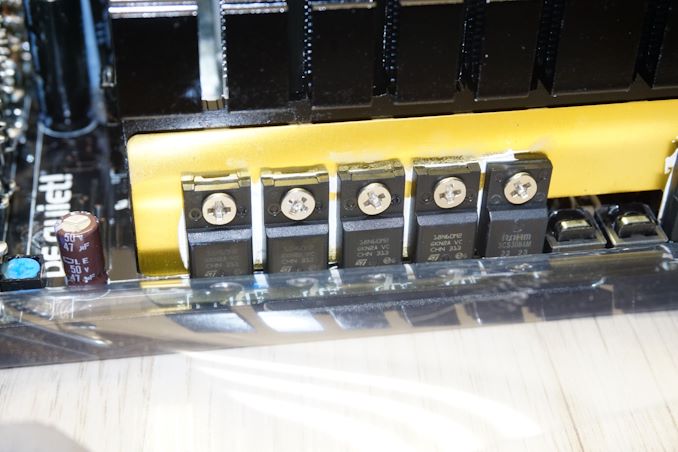
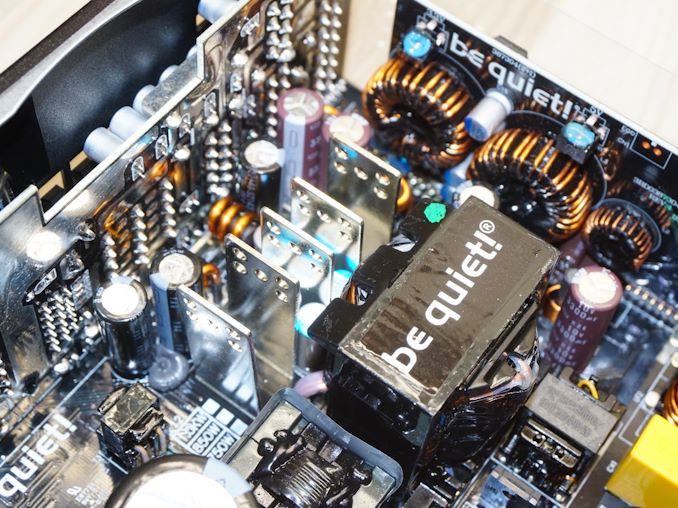
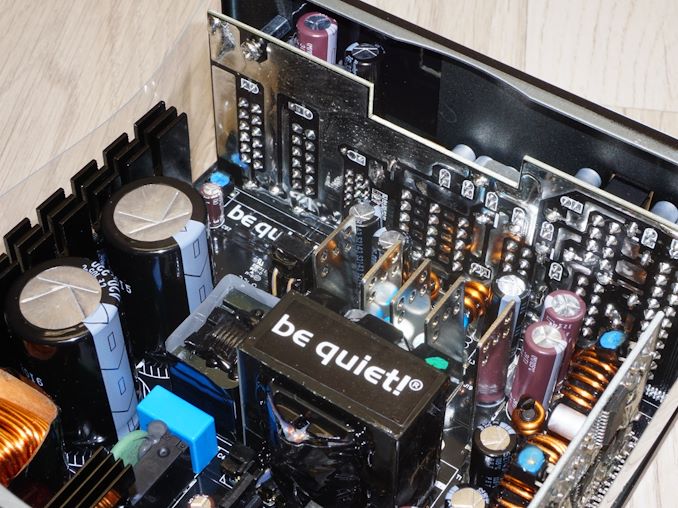








32 Comments
View All Comments
PeachNCream - Sunday, April 7, 2024 - link
It's safe to say there are more than PSUs, CPU coolers, and external storage devices worth reviewing. Companies still produce and sell laptops, phones, *graphics adapters (integrated and discrete)* and so forth. Might be good for Ananadtech to nudge Future about getting permission to write those sorts of reviews or it really will be nailing the coffin closed on the "AT suddenly redirects to THG and no one is surprised" outcome lots of us are expecting - just a thought from a couple decades-long reader in light of what the front page looks like two days after yet another power supply review loiters at the top with little acknowledgement it was even posted.ballsystemlord - Monday, April 8, 2024 - link
I'm not sure it's due to Future or the lack of staff at AT. Ian was the latest to leave and he's now doing his own YT channel, so it seems he wants to continue to contribute to the tech news readers.PeachNCream - Monday, April 8, 2024 - link
Future would have to invest in AT ad actually hire staff. It's pretty clear given that the writers are publishing on THG as well that this is a secondary interest at best and changes are afoot too. When a company only reviews samples its provided, it become beholden to them. There's something to be said about leveraging the budget a bit to buy things off the shelves when there isn't a much-hyped NDA deadline.As for Ian - well it's best to leave that hot mess unmentioned.
GeoffreyA - Tuesday, April 9, 2024 - link
I think it would be great to see more general tech and science topics reported on as well. Just a few paragraphs on the latest dark energy news, Google's Jpegli, etc.GeoffreyA - Tuesday, April 9, 2024 - link
Also, though I understand it might not be possible at present, YouTube would a good, and necessary, way to diversify. Many go first to videos for news these days.TheinsanegamerN - Tuesday, April 9, 2024 - link
The writing has been on the wall for a LONG time. Many of us called it when AT used the "california fire burned staff member house" excuse for why they could no longer do GPU reviews. They had "plans" to fix things, and apparently either that staff member never got a new house or AT just gave up.When you cant review tech because your company relies on home setups to test things, that says a LOT. AT has been a minor tech site for years, and with the loss of actual technical breakdowns, has little reason to exist.
Within 5 years, if AT still exists, it will be just a content mill, "aggregating" reviews from other sites. Hell look at this comment section, straight out of 2001. They have no interest in maintaining the site.
GeoffreyA - Tuesday, April 9, 2024 - link
If AT could get free from its rotten publisher, get funding and more staff, things can turn around. AT was doing all right, but Ian seems to have spirited away their high-profile connections.PeachNCream - Tuesday, April 9, 2024 - link
Fine, let's open the Ian box. I think he was a good writer, but he also left many of us with the impression that he sold out to whomever it was that owned Killer NICs before Intel - Qualcomm IIRC - by selling the benefits of packet prioritization from from the assorted programs on the local machine to improve game performance. He 100% ignored the fact that once said packets leave the PC's local adapter, they are give no priority whatsoever through the dozens of traffic-agnostic routers and potentially thousands of miles of copper and optical fiber said data traverses to and from the game host. That prioritization ends at your ISP's hardware for a home user. He inexplicably foot-stomped those benefits without either a) understanding the most basic networking concepts and b) explaining why he was enamored and abusing the public-facing nature of his position at AT to spread what was at best a non-beneficial product. Given Killer's crappy software stack and Qualcomm's bad driver writing at the time along with garbo hardware, it was potentially a disservice to readers to end up with inferior networking hardware. The fact that he's gone off to chase that content creator gamble dream on YouTube is to *great* benefit of AT. Good riddance and despite the quality writing, no one needed that level of misdirection.Should AT transition to video? Maybe, but with clear limitations on budget and the need for what are effectively small production studios to make the leap in a competitive manner, it's not positioned to play catch up and Future probably has no appetite for it anyhow. They're just milking the money cow until it's skeletal and moving on like locusts to the next thing. Sucks for the employees and for the readers, but that's reality when profit not passion drives a publisher.
ballsystemlord - Tuesday, April 9, 2024 - link
I think you're being a bit too harsh on Ian. The Ethernet in your computer isn't really something users normally have control over. No mass shopping site that I know of even has a toggle for which Ethernet chipset the motherboard supports. It's important, but not really vital.Worth noting is that he alone, of all tech reviewers, interviewed many of the developers of our chips. Granted, I think he could have asked better questions in some cases, but that's what we got from his skill set.
Additionally, Ian also developed some of the SW used to test CPUs for AT. I actually found his test code base, and it's revamped version, to be interesting benchmarks for how poorly written, vs. well written, code behaved on different CPUs and arch-es.
GeoffreyA - Wednesday, April 10, 2024 - link
While Ian did interview many high-profile developers, and contributed a great deal to AT, I think his writing was obscure and too detailed. Anand, in contrast, made computers exciting: one was kept on the edge of one's seat as he took the reader through the innards of the CPU. He had an abstraction and made it accessible to the layman. And who can forget those memorable titles? It's Judgment Day, The Empire Strikes Back, AMD on the Counterattack, and if I remember rightly, the P4's heatsink was "Mount Everest." His words still linger on when I think of CPUs.